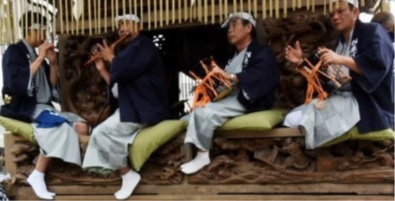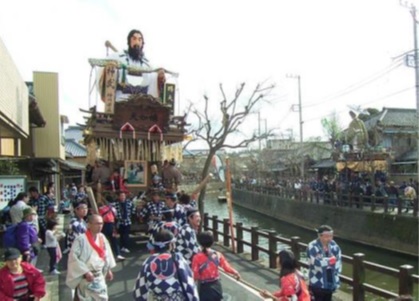Banquet
- Date: Wednesday, January 18, 2017. 18:00 - 20:00
- Place: Makuhari Messe, International Conference Hall 2F, Convention Hall A
Sawara Bayashi
Introduction to Sawara-bayashi
It is said that kagura-bayashi started to be introduced in the Tenshou era (1573 to 1593). Interaction with Edo using water transportation on the Tone River thrived in the latter part of the Edo period (1603 to 1868). Against this background, sawara-bayashi developed under the influence of kabuki (classical drama) and joruri (dramatic recitation accompanied by a shamisen) that were very popular at that time. The dashi (portable shrines) and large dolls then became ever more gorgeous and gigantic. It is said that this led to the refinement of the unique hayashi (musical accompaniment) to fit such a parade. Gorgeous dashi (10 for the summer festival in July and 14 for the fall festival in October) are paraded through the streets of Sawara over three days every year. The hayashi groups ride on these dashi and play their music.
"Sawara-Bayashi" is one of three major Japanese traditional accompanying musics for Yama, Hoko, Yatai, float festivals. Yama, Hoko, Yatai, float festivals in Japan becomes one of the Intangible Cultural Heritage of Humanity of UNESCO in 2016. See the following URL for detail.
www.unesco.org/culture/ich/en/RL/yama-hoko-yatai-float-festivals-in-japan-01059









